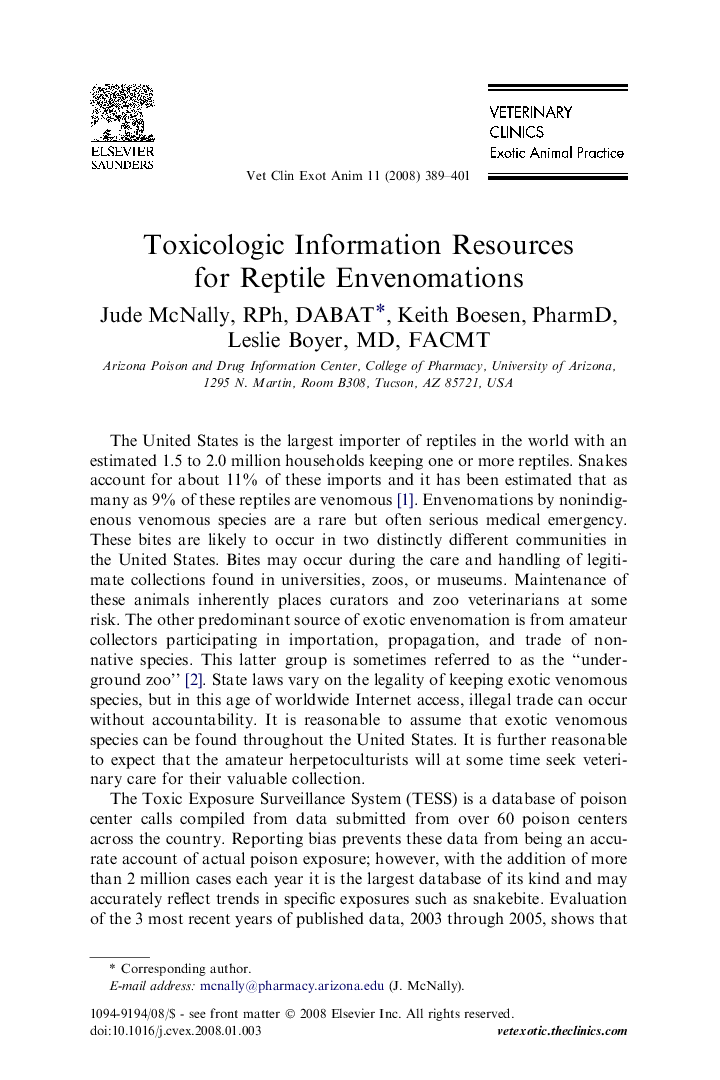| Article ID | Journal | Published Year | Pages | File Type |
|---|---|---|---|---|
| 2413301 | Veterinary Clinics of North America: Exotic Animal Practice | 2008 | 13 Pages |
Abstract
The United States is the largest importer of reptiles in the world, with an estimated 1.5 to 2.0 million households keeping one or more reptiles. Snakes account for about 11% of these imports and it has been estimated that as many as 9% of these reptiles are venomous. Envenomations by nonindigenous venomous species are a rare but often serious medical emergency. Bites may occur during the care and handling of legitimate collections found in universities, zoos, or museums. The other predominant source of exotic envenomation is from amateur collectors participating in importation, propagation, and trade of non-native species. This article provides toxicologic information resources for snake envenomations.
Related Topics
Health Sciences
Veterinary Science and Veterinary Medicine
Veterinary Medicine
Authors
Jude RPh, DABAT, Keith PharmD, Leslie MD, FACMT,
